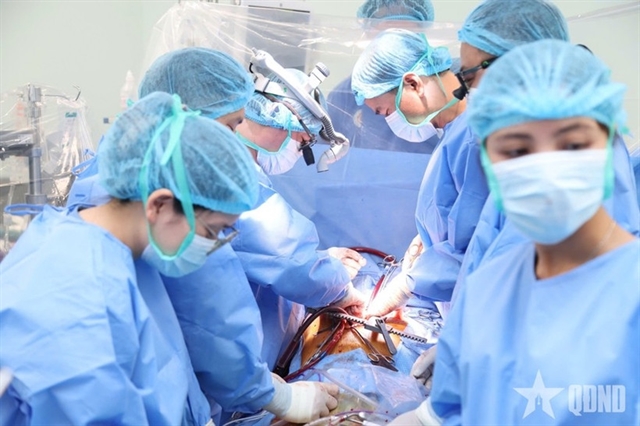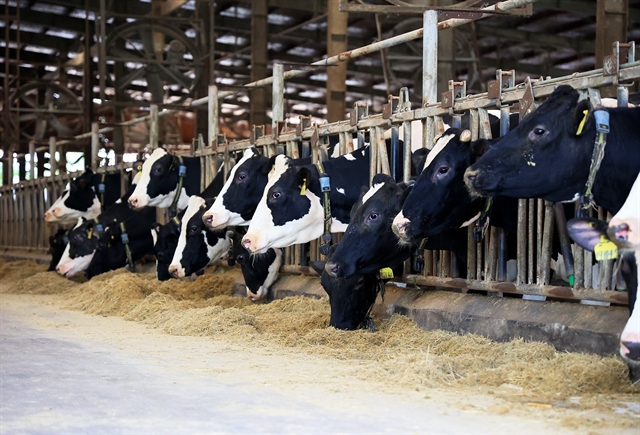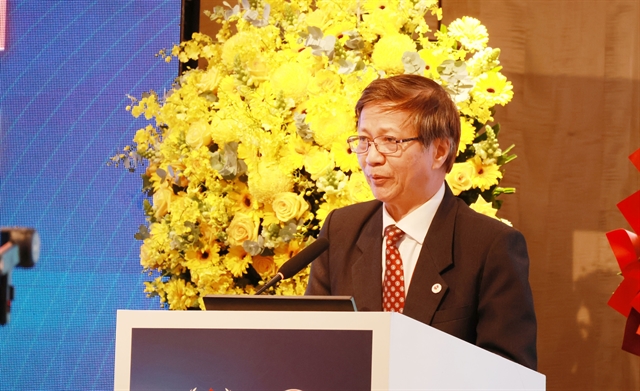 Society
Society


|
| A dairy cow farm in the southern province of Tây Ninh. — VNA/VNS Photo Hồng Đạt |
HÀ NỘI — The Animal Husbandry Association of Việt Nam (AHAV) has stated that this is not the appropriate time for the livestock industry and facilities to be subject to greenhouse gas stipulations.
Their position was communicated in feedback sent to the Ministry of Natural Resources and Environment with regards to the amendments to the Government's Decree No. 06/2022/NĐ-CP, which regulates the reduction of greenhouse gases and the protection of the ozone layer, specifically on the issue of including the livestock sector and facilities in the greenhouse gas inventory.
According to the environment ministry, in line with the Decree's provisions, the ministry has coordinated with other ministries and agencies to develop and submit the list to the Government for issuance.
This includes emitting facilities in sectors such as industry and trade, transportation, construction, natural resources and environment with annual greenhouse gas emissions of 3,000 tons of CO2 equivalent or more; thermal power plants, industrial production facilities, commercial buildings, and freight transport companies with annual consumption of 1,000 tons of oil equivalent (TOE) or more; solid waste treatment facilities with an annual capacity of over 65,000 tons.
In reviewing and updating this list, the Ministry of Agriculture and Rural Development, along with provinces and centrally-run cities, proposed the inclusion of large-scale livestock (cattle, pigs) facilities.
After studying international experiences, assessing the current domestic situation, and based on the opinions of ministries, sectors, and localities, the livestock industry was unanimously proposed to be added to the updated list: "Livestock facilities with an annual scale of 1,000 cattle or 3,000 pigs or more."
The draft list of emitting sectors and facilities that must conduct greenhouse gas inventories is expected to be issued by the Government in 2024, which also includes a proposed list of 341 livestock facilities meeting the aforementioned criteria.
In the feedback document, the Vietnamese husbandry association stated that although previously they shared the national goal of controlling emissions and believed it was feasible to include the livestock sector in the greenhouse gas inventory, the position has changed.
Through practical surveys and workshops, as well as through consulting experts, businesses, livestock farmers, and studying documents and experiences from other countries, the association found that it is not truly appropriate for Việt Nam to include the livestock sector and facilities in the greenhouse gas inventory at this time.
According to the association, domestic livestock production is facing multiple difficulties compared to other economic sectors and even compared to the livestock sector of developed countries.
Most of the countries in the free trade agreements that Việt Nam has signed, such as CPTPP, EVFTA, and Việt Nam-US, have much more favourable conditions and space for livestock development than Việt Nam.
Greenhouse gas inventory regulation will increase production costs, raising the price of livestock products domestically, which is already very high compared to developed countries.
The association claimed that for inspection costs, each livestock facility would be set back between VNĐ100-150 million (about US$3,900-5,900) annually; not to mention that these facilities must comply with emission reduction quotas annually.
Failure to comply will result in penalties, causing more hardship for livestock farmers.
The association argues that except for farms run by companies and corporations with well-managed, technically competent staff who can implement inventory techniques and strictly apply greenhouse gas emission reduction procedures, most domestic livestock farms will not be able to meet these requirements.
Furthermore, the number of domestic organisations and experts with sufficient qualifications and experience in guiding inventory and greenhouse gas control measures in the livestock sector is very limited, requiring time for training.
For these reasons, the association said now is poor timing, and there's no State's support for an industry that is already facing too many risks during international integration.
Nguyễn Xuân Dương, Chairman of the AHAV, greenhouse gas inventory is an uncharted territory for Vietnamese farmers, not to mention future emission reduction issues in later stages.
Currently, two large corporations in the dairy industry have actively implemented these tasks, but many other livestock farmers cannot keep up.
The association proposes that the Government delay the inclusion of the industry at least until 2027, which will give more time for management agencies, service units, and livestock farmers to familiarise themselves, obtain appropriate knowledge and technology, renovate farms, and prepare resources to carry out these very new and complex requirements. — VNS




